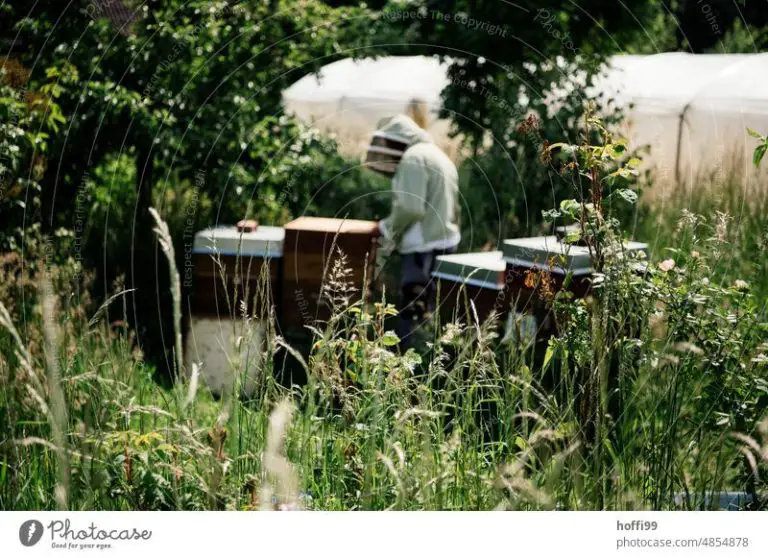Do Soy Wax Flakes Go Bad?
What Are Soy Wax Flakes?
Soy wax flakes are made from hydrogenated soybean oil. According to CandleScience, “Soy wax is a vegetable wax made from the oil of soybeans. After harvesting, the beans are cleaned, cracked, de-hulled, and rolled into flakes.” Soy wax is often used as an alternative to paraffin wax for candle making, soap making, lip balm, and more.
Soy wax flakes are available for purchase in bags of flakes/chips or in bulk blocks that can be chopped into smaller pieces. The flakes create a smooth appearance in candle making and melt at a low temperature. Soy wax is praised for being a renewable and sustainable wax option compared to paraffin.
Sources:
https://www.candlescience.com/learning/what-is-soy-wax/
https://en.wikipedia.org/wiki/Soy_candle
Shelf Life of Soy Wax Flakes
Properly stored, unopened soy wax flakes typically have a shelf life of 1-2 years before quality starts to deteriorate. According to candle making supplier Lonestar Candle Supply, “Soy wax has a shelf life of about 2 years when stored properly” [1]. Once opened, the shelf life is reduced to 6-12 months.
The key factor impacting shelf life is proper storage conditions. Soy wax flakes should be kept in a cool, dry place away from heat and light. Fluctuating temperatures can cause the wax to sweat and lose quality over time. Storing in an airtight container can help prolong freshness.
As soy wax flakes age past their prime, the quality and performance will slowly decline. Old wax may lose its ability to hold fragrance as efficiently and have a grainier texture. Candles made from expired soy wax may tunnel or not burn as cleanly. Discoloration or dust accumulation are other signs the wax is too old.
Signs Soy Flakes Have Gone Bad
There are a few key signs that indicate soy wax flakes may have gone bad and should be discarded:
Change in Color/Odor: Fresh soy wax flakes are typically off-white or pale yellow in color. As the wax ages and oxidizes, it may turn a deeper yellow or take on a rancid odor. A strong, unpleasant smell is a clear sign the wax has spoiled and should not be used (Wayne Art Gallery 2023).
Increased Oiliness: Soy wax contains soybean oil, which can separate out over time. If the flakes appear oily, greasy, or translucent, that is a red flag the wax has deteriorated. The oil content will prevent the wax from hardening properly.
Poor Performance: If you’ve noticed issues like poor scent throw, frosting, wet spots, or crumbling in candles made with the soy flakes, the wax quality itself may be to blame. Soy wax can lose its integrity and performance abilities as it ages.
In general, trust your senses – if the soy wax smells rancid or just seems “off,” don’t risk ruining candles by using old material. Fresh soy wax flakes will look, feel, and smell neutral.
Proper Storage
Proper storage is crucial for maximizing the shelf life of soy wax flakes. According to Candle Making Information, soy wax should be stored in a cool, dark place to help prevent it from spoiling. An airtight container is recommended to protect the wax from moisture, dust, and other contaminants. Temperature fluctuations should also be avoided, as large swings in temperature can negatively impact the quality and performance of the wax.

The ideal storage temperature for soy wax flakes is between 60-80°F. Storing the container of soy wax in a closet, basement, or pantry away from external walls of the home can help maintain a stable temperature. Checking on the wax occasionally to make sure no moisture has gotten into the container is also advised. With proper storage in a cool, dark place away from temperature swings, soy wax can maintain peak quality for 1-2 years.
Extending Shelf Life of Soy Wax Flakes
Properly storing soy wax flakes is the best way to extend their shelf life. Here are some tips for keeping soy wax flakes fresh for longer:
- Vacuum seal or freeze the flakes for long-term storage. The lack of oxygen will help prevent rancidity.
- Use the oldest soy wax flakes first when making candles or other projects. Rotate your stock.
- Only purchase smaller quantities that you’ll use up within 6-12 months. Buying in bulk may seem cost-effective but will lead to waste if the wax expires before you can use it all.
With proper storage techniques, it’s possible to extend the shelf life of soy wax flakes beyond the typical 1-2 years. But eventually the quality and performance will start to deteriorate, so use your oldest stock first.
Safety
Using rancid soy wax flakes is generally safe and not dangerous. The wax simply may not perform as expected if it has gone rancid. The quality and scent throw can be negatively impacted by the oxidation that occurs as the wax ages and reacts with oxygen in the air. Rancid soy wax tends to lose its fragrance more quickly and not burn as evenly or cleanly.
However, according to candle making experts, using extremely rancid or moldy soy wax can produce more soot when burned and is not recommended for candle making. According to crafters, if you see any mold growing in the wax, it is best to not use it and throw it away instead.
So in summary, using older soy wax is generally safe, but extremely rancid, moldy or poorly stored wax that could contain impurities should be discarded and not used for candles or melts.
When to Toss Soy Wax Flakes
Soy wax flakes that are properly stored can last 1-2 years before starting to deteriorate. However, there are some signs that indicate it’s time to toss old soy wax flakes:
If the odor, color, or texture has changed dramatically from when you first purchased it, the wax is likely past its prime. Soy wax is supposed to have a light, neutral scent. A rancid or chemical-like smell means the wax has gone bad.
The color should remain a light cream/off-white. Darkening or yellowing of the flakes indicates deterioration. The texture should be smooth and even – wax that has gone grainy or powdery will not perform well.
If you make candles with old soy wax and notice poor performance like wet spots, frosting, poor scent throw, or tunneling wicks, the wax is no longer viable for candle making.
When in doubt about whether soy wax flakes are still usable, it’s best to simply throw it out. Fresh wax will provide the best results.
Recycling Options
There are a few options for recycling soy wax flakes once you decide they need to be discarded:
Soy wax can be composted since it is made from soybeans, a natural material. Add flakes to your compost pile and they will break down over time just like other organic matter. Composting is an eco-friendly way to reuse wax.
Another option is to remelt and reuse soy wax flakes in less finicky applications. If the wax is too old or contaminated for candlemaking or other precision crafts, you can melt it down and use it for things like waxing thread, lubricating drawers, or making fire starters. Get creative with reusing in simple projects.
According to this source, you can also combine soy wax scraps with other recycled candle wax to make new candles or wax melts. Blend together similar types of wax for best results.
Buying in Bulk
Buying soy wax flakes in bulk quantities can lead to significant cost savings compared to buying smaller amounts. Many suppliers offer discounts for ordering 25 lbs or more at a time. For example, according to Fillmore Container, a 25 lb box of soy wax flakes costs around $2.20 per lb, while the per pound price drops below $2 for 50 lbs or more.
However, it’s important to consider proper storage when buying in bulk, as soy wax can lose quality and go rancid if not stored correctly. The flakes come packed in large boxes or bags, which are not ideal for long-term storage. To maximize shelf life, it’s recommended to split bulk wax into smaller airtight containers, store in a cool, dry place, and use within 1 year.
For crafters or small businesses with limited storage space, it may be better to buy only the amount of soy wax needed for upcoming projects, rather than purchasing the largest bulk size. But for high volume production, the per pound savings of bulk soy wax likely outweighs the need for additional storage containers and space.
Summary
With proper storage, soy wax flakes typically have a shelf life of 1-2 years before going bad. Pay attention to any changes in the color, smell, or texture of the flakes over time. Rancid or expired soy wax will often appear more yellow, give off a stale odor, and develop a gritty or crumbly texture. If your soy wax flakes exhibit these signs of deterioration, it is best to discard and replace them. Do not try to salvage old soy flakes by melting or reconditioning them, as the quality will be compromised. For optimal shelf life, store soy wax in an airtight container in a cool, dry location away from heat and sunlight. Following proper storage and handling practices will help maximize the lifespan of your soy wax flakes.




